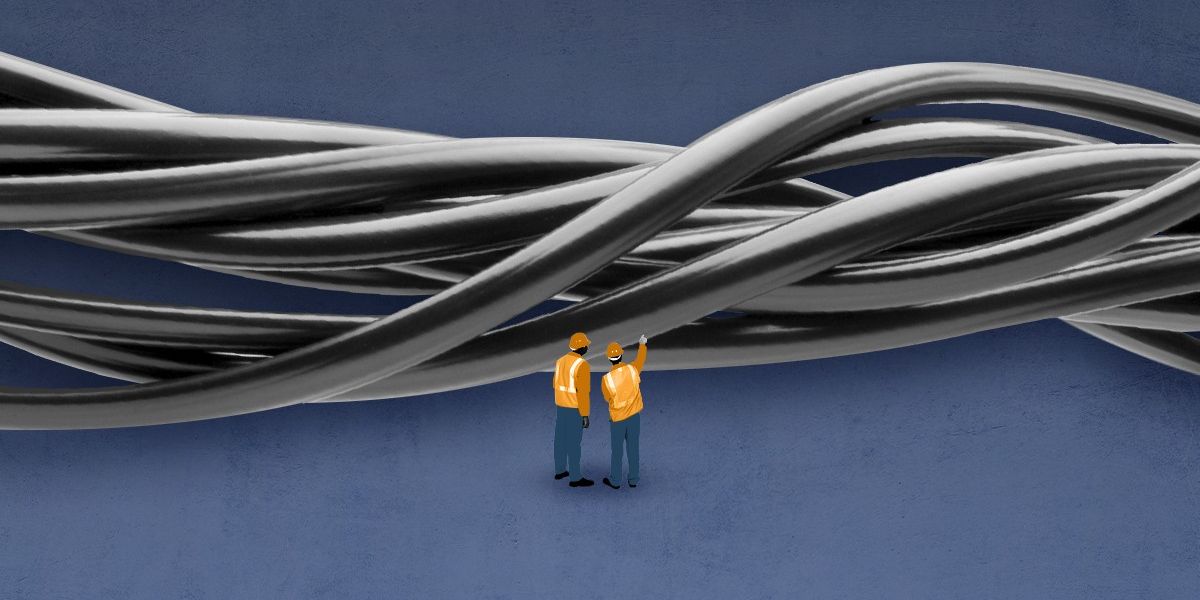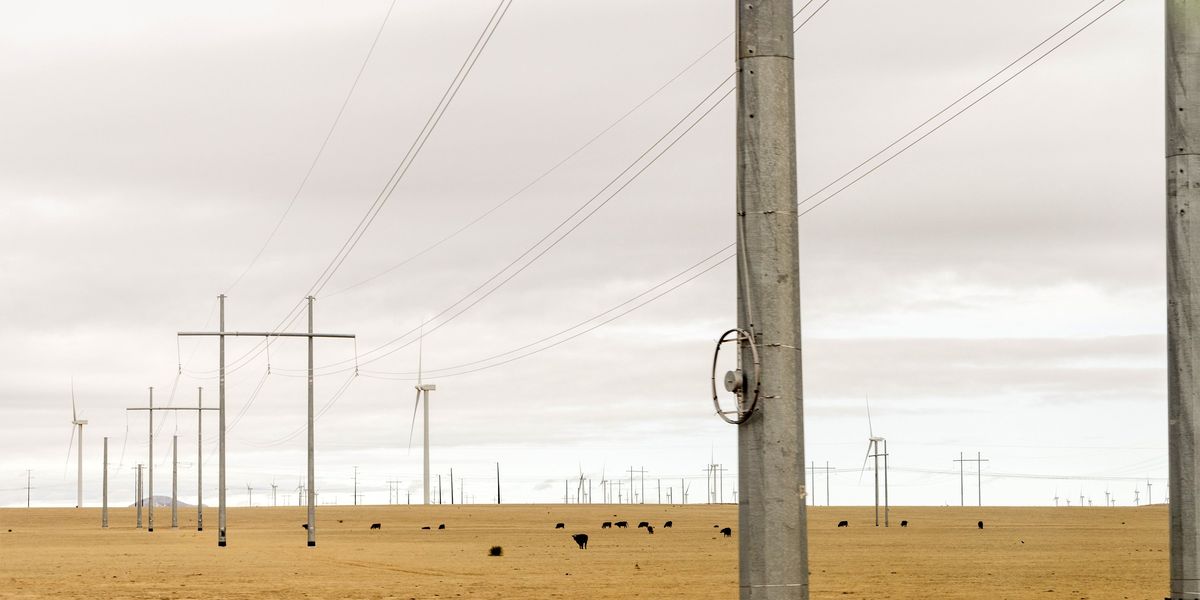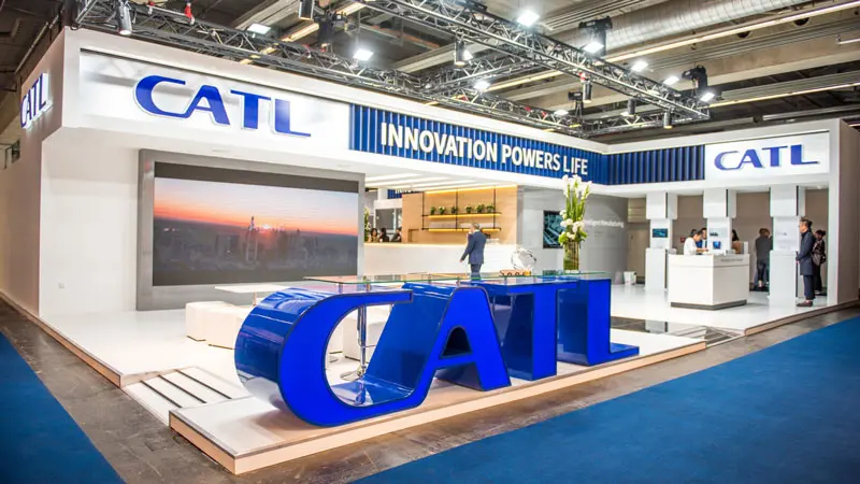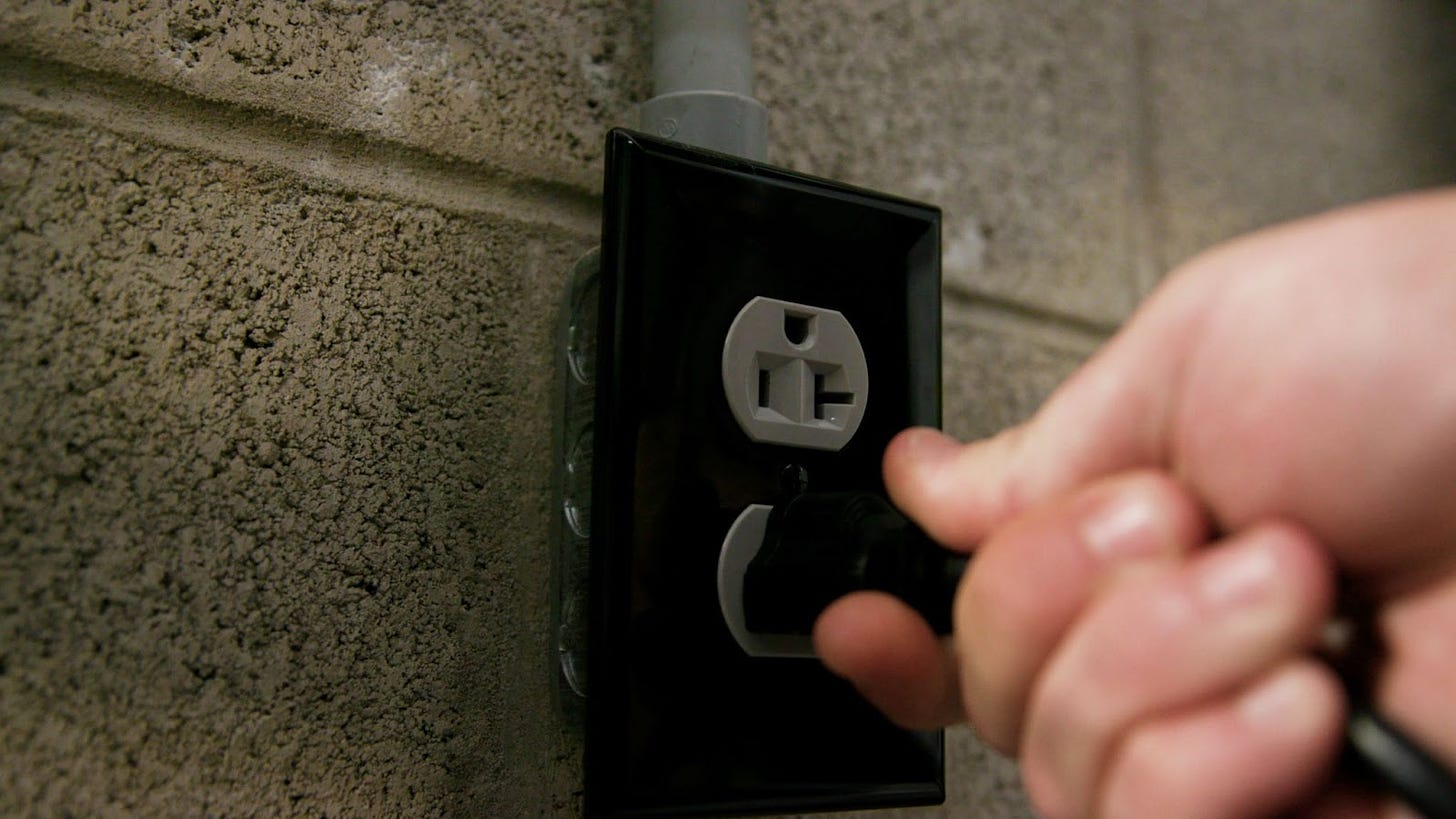Welcome to Tesla Motors Club
Discuss Tesla's Model S, Model 3, Model X, Model Y, Cybertruck, Roadster and More.
Register
Install the app
How to install the app on iOS
You can install our site as a web app on your iOS device by utilizing the Add to Home Screen feature in Safari. Please see this thread for more details on this.
Note: This feature may not be available in some browsers.
-
Want to remove ads? Register an account and login to see fewer ads, and become a Supporting Member to remove almost all ads.
You are using an out of date browser. It may not display this or other websites correctly.
You should upgrade or use an alternative browser.
You should upgrade or use an alternative browser.
Electrify Everything
- Thread starter ItsNotAboutTheMoney
- Start date
mspohr
Well-Known Member
It will take years to decades to electrify the fleet. There are plenty of routes that can be serviced today with shorter range EVs.Pretty sure it will be a good while before the USPS electrifies the entire fleet. Hopefully they will find best use cases to start.
mspohr
Well-Known Member
I installed a Chiltrix CX34 unit in my original house which provides hydronic floor and DHW heating. It's been working well for 7 years.Anyone have good geothermal or heat pump experience in USA?
It’s on my list to electrify everything
I then installed the same unit in my new Cottage with hydronic floor and DHW heating. It's been working well for 3 years.
I installed Mitsubishi heat pump units (three outside units, 12 inside head units) on the first floor of my office building 3 years ago. After a few problems with leaky connections (installer error), they have been working well.
This summer I installed LG heat pump units on the second floor of my office building (12 units, one for each office). They have been working well.
These are all air source, not geothermal.
I have air source Mitsubishi mini splits at my house since 2018. They work but can't keep up with the cold very well when it's 20 below. Older house that if I were to do it over would be far better insulated. We put in Lo-E triple pane windows, too.
The heat pump system kept the pipes from freezing, but struggled to keep the house above 55 when it was -20.
So we also have an efficient wood stove and burn trees we cut for wildfire mitigation.
The heat pump system kept the pipes from freezing, but struggled to keep the house above 55 when it was -20.
So we also have an efficient wood stove and burn trees we cut for wildfire mitigation.
mspohr
Well-Known Member
I would guess that -20 F would be a challenge for any heat pump system.I have air source Mitsubishi mini splits at my house since 2018. They work but can't keep up with the cold very well when it's 20 below. Older house that if I were to do it over would be far better insulated. We put in Lo-E triple pane windows, too.
The heat pump system kept the pipes from freezing, but struggled to keep the house above 55 when it was -20.
So we also have an efficient wood stove and burn trees we cut for wildfire mitigation.
Fortunately where I live it rarely gets below 0F and the heat pumps struggle but do work.
Or any system at all that's remotely efficient, especially without better insulation than I have.I would guess that -20 F would be a challenge for any heat pump system.
Fortunately where I live it rarely gets below 0F and the heat pumps struggle but do work.
"High-HSPF heat pumps can handle cold weather. At temperatures below -20°F, cold climate heat pumps still provide dependable heat, and many models are 100% efficient at sub-freezing temperatures."
"Hyper Heat is a new home heating system designed by Mitsubishi. Hyper Heat is a heat pump system, but it adds an exclusive Inverter technology that allows it to maintain its efficiency when temperatures drop, all the way down to -13 degrees Fahrenheit."
Im looking at this.
"Hyper Heat is a new home heating system designed by Mitsubishi. Hyper Heat is a heat pump system, but it adds an exclusive Inverter technology that allows it to maintain its efficiency when temperatures drop, all the way down to -13 degrees Fahrenheit."
Im looking at this.
My Mitsubishi system is rated to -26 F. It certainly works, just couldn't keep up. I suppose if it were a serious problem I could go with a bigger pump, but I won't since I have readily available wood and a very efficient stove."High-HSPF heat pumps can handle cold weather. At temperatures below -20°F, cold climate heat pumps still provide dependable heat, and many models are 100% efficient at sub-freezing temperatures."
"Hyper Heat is a new home heating system designed by Mitsubishi. Hyper Heat is a heat pump system, but it adds an exclusive Inverter technology that allows it to maintain its efficiency when temperatures drop, all the way down to -13 degrees Fahrenheit."
Im looking at this.
David_Cary
Active Member
Being "100% efficient" is not really a helpful statement. Using that terminology in regards to a heat pump is disingenuous.
In the common use of the term, a heat pump is usually 200-300% efficient. 100% efficient is where heat strips are. A heat pump is not worth using at 100% efficiency. Heat strips will be the same and not wear out like a heat pump does - and if they somehow did, they are wickedly cheaper to replace and/or service.
And, of course, 31F is a "sub-freezing" temperature - also a rather worthless and unhelpful term.
Heat pumps can work at quite low outdoor temperatures but I think -20F is a temperature that would be unlikely to offer much efficiency improvement over heat strips.
I have a pretty efficient newer house and at 15F or so is the temp which the heat pump starts losing the battle against heat loss. That is a sizing issue and not an efficiency issue but I am thinking the COP is in the 1.5 range at that point. I live in an a/c predominant climate where 15 degrees is breached for a few hours per year. Of course my unit is not a "cold climate" unit. But thermodynamics are still an issue to deal with for any heat pump.
In the common use of the term, a heat pump is usually 200-300% efficient. 100% efficient is where heat strips are. A heat pump is not worth using at 100% efficiency. Heat strips will be the same and not wear out like a heat pump does - and if they somehow did, they are wickedly cheaper to replace and/or service.
And, of course, 31F is a "sub-freezing" temperature - also a rather worthless and unhelpful term.
Heat pumps can work at quite low outdoor temperatures but I think -20F is a temperature that would be unlikely to offer much efficiency improvement over heat strips.
I have a pretty efficient newer house and at 15F or so is the temp which the heat pump starts losing the battle against heat loss. That is a sizing issue and not an efficiency issue but I am thinking the COP is in the 1.5 range at that point. I live in an a/c predominant climate where 15 degrees is breached for a few hours per year. Of course my unit is not a "cold climate" unit. But thermodynamics are still an issue to deal with for any heat pump.
Historically many heat pumps poop out around -5F, which is why many people's pipes froze when the Midwest had a deep cold a few years ago. The newer tech for my pump, as I noted, is rated for -26F and kept the pipes from freezing while we were out of town and the low temp was -21F midway through.Heat pumps can work at quite low outdoor temperatures but I think -20F is a temperature that would be unlikely to offer much efficiency improvement over heat strips.
And, of course, that was only for a few days, so the rest of the time the Mitsubishi works quite well, and we are nearly always well below freezing at night.
This is what that looks like in terms of kWh/day for the minisplits, isolated:
I don't have exact records from before, but I can certainly say that the winter power usage is 1/2-1/3 of what it was when we had baseboard.
mspohr
Well-Known Member
Most heat pumps have provision for resistance backup heat. My Chiltrix units have this option but I have never felt the need for it in my climate.Historically many heat pumps poop out around -5F, which is why many people's pipes froze when the Midwest had a deep cold a few years ago. The newer tech for my pump, as I noted, is rated for -26F and kept the pipes from freezing while we were out of town and the low temp was -21F midway through.
And, of course, that was only for a few days, so the rest of the time the Mitsubishi works quite well, and we are nearly always well below freezing at night.
This is what that looks like in terms of kWh/day for the minisplits, isolated:
View attachment 1018325
I don't have exact records from before, but I can certainly say that the winter power usage is 1/2-1/3 of what it was when we had baseboard.
Efficiency would go down to 100% but that would be fine for cold snaps.
nwdiver
Well-Known Member
mspohr
Well-Known Member

There Is a Stupidly Easy Way To Expand the Grid
It’s called “reconductoring,” and it’s both faster and cheaper than building new power lines.
 heatmap.news
heatmap.news
But it’s possible to avoid this time-consuming process, at least in many cases, by simply reconductoring lines along existing rights-of-way. Most of our existing power lines have a steel core surrounded by strands of aluminum. Advanced conductors replace the steel with a lighter but stronger core made of a composite material, such as carbon fiber. This subtle shift in materials and design enables the line to operate at higher temperatures, with less sag, significantly increasing the amount of power it can carry.
Reconductoring isn’t the only no-brainer alternative to building new power lines. Another study from the clean energy think tank RMI published last week illustrates the opportunity with even cheaper tweaks called “grid enhancing technologies.” One option is to install sensors that collect data on wind speed, temperature, and other factors that affect power lines in real time, called dynamic line ratings. These sensors allow utilities to safely increase the amount of power transmitted when weather conditions permit it. There are also power flow controls that can redirect power away from congested lines so that it can be transmitted elsewhere rather than wasted.
mspohr
Well-Known Member

Profiteering Hampers U.S. Grid Expansion
Private utility companies are blocking new interregional transmission lines
 spectrum.ieee.org
spectrum.ieee.org
The United States is not building enough transmission lines to connect regional power networks. The deficit is driving up electricity prices, reducing grid reliability, and hobbling renewable-energy deployment.
At the heart of the problem are utility companies that refuse to pursue interregional transmission projects, and sometimes even impede them, because new projects threaten their profits and disrupt their industry alliances. Utilities can stall transmission expansion because out-of-date laws sanction these companies’ sweeping control over transmission development.
mspohr
Well-Known Member

CATL, BYD To Slash Battery Prices By 50% In 2024. BOOM! EVs Win! - CleanTechnica
CATL says it will begin selling LFP battery cells in the VDA format at price less than $60 per kWh hour by the middle of this year.
 cleantechnica.com
cleantechnica.com
reports that in order to secure its market position, CATL is sorting out production line resources and pushing for cost reductions that could drive the price of its VDA spec lithium iron phosphate battery cells down to RMB 0.4 per Wh. That translates to $56.47 per kWh hour. At that price, a 60 kWh battery that costs manufacturers $6,776.00 today will cost just $3,388 12 months from now, saving EV manufacturers over $3,000 per vehicle.
Batteries have gone from being in tight supply a year ago — when the price of lithium spiked to stratospheric levels — to being in oversupply today. Some in the battery industry believe that prices below 0.4 RMB per Wh will leave battery makers with no profit, but in a competitive market it is possible for them to gain market share at a loss, although that is obviously not a long term strategy.
The upshot here is that battery prices are indeed falling just as Tony Seba predicted 10 years ago. That is great news for the EV revolution. In the final analysis, lower prices for electric cars will do more to make that revolution complete than all the mandates in the world.
iPlug
Active Member
Might argue this is at least equally good news for residential and grid level battery storage growth.
CATL, BYD To Slash Battery Prices By 50% In 2024. BOOM! EVs Win! - CleanTechnica
CATL says it will begin selling LFP battery cells in the VDA format at price less than $60 per kWh hour by the middle of this year.cleantechnica.com
reports that in order to secure its market position, CATL is sorting out production line resources and pushing for cost reductions that could drive the price of its VDA spec lithium iron phosphate battery cells down to RMB 0.4 per Wh. That translates to $56.47 per kWh hour. At that price, a 60 kWh battery that costs manufacturers $6,776.00 today will cost just $3,388 12 months from now, saving EV manufacturers over $3,000 per vehicle.
Batteries have gone from being in tight supply a year ago — when the price of lithium spiked to stratospheric levels — to being in oversupply today. Some in the battery industry believe that prices below 0.4 RMB per Wh will leave battery makers with no profit, but in a competitive market it is possible for them to gain market share at a loss, although that is obviously not a long term strategy.
The upshot here is that battery prices are indeed falling just as Tony Seba predicted 10 years ago. That is great news for the EV revolution. In the final analysis, lower prices for electric cars will do more to make that revolution complete than all the mandates in the world.
mspohr
Well-Known Member

A. O. Smith’s New 120V Heat Pump Water Heater Allows You To Plug It Into A Standard Outlet - CleanTechnica
A. O. Smith just released a 120V plug-in heat pump water heater (HPWH), which is the second model to arrive on the mass market
 cleantechnica.com
cleantechnica.com
A. O. Smith just released a 120V plug-in heat pump water heater (HPWH), which is the second model to arrive on the mass market (the first to market, Rheem, I reviewed here). It is an exciting product with some innovative designs that allows many households to more easily replace their gas water heaters with heat pumps. It uses nifty technology to provide lots of hot water while still (miraculously) only plugging into the same standard 120-volt outlet where you charge your cell phone
mspohr
Well-Known Member

Induction ovens with big batteries solve lots of problems
Induction stoves are a great, safe way to save on electricity costs and can heat much quicker, safer, and more...
 electrek.co
electrek.co
Induction stoves are a great, safe way to save on electricity costs and can heat much quicker, safer, and more accurately than natural gas or propane stoves. But a new breed of these stoves includes huge batteries, which opens up new opportunities by only requiring a 120V outlet, offering 40-sec water boiling, backup power to other appliances like the refrigerator, and even IRA tax rebates. Let’s take a look at two of these new models and try to understand if it makes sense for an oven to have a huge battery over a more centralized Powerwall type of home backup battery.
There are a ton of Induction oven options out there, but a new breed includes a significant battery inside the actual stove/top. By adding a battery, you can heat four burners with a normal household 120V line. This is important for those replacing gas or propane stoves and don’t want to add the cost of running a 240V line that most resistance and induction ovens require
Similar threads
- Replies
- 19
- Views
- 1K
- Replies
- 3
- Views
- 901
- Replies
- 125
- Views
- 5K
- Replies
- 23
- Views
- 7K
- Locked
- Replies
- 8
- Views
- 3K


